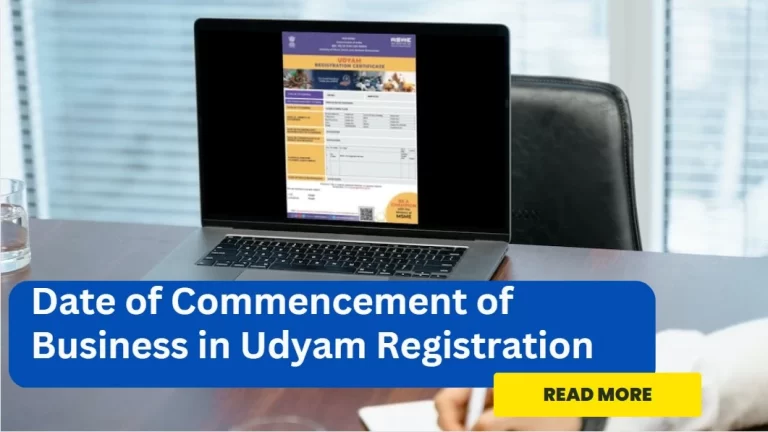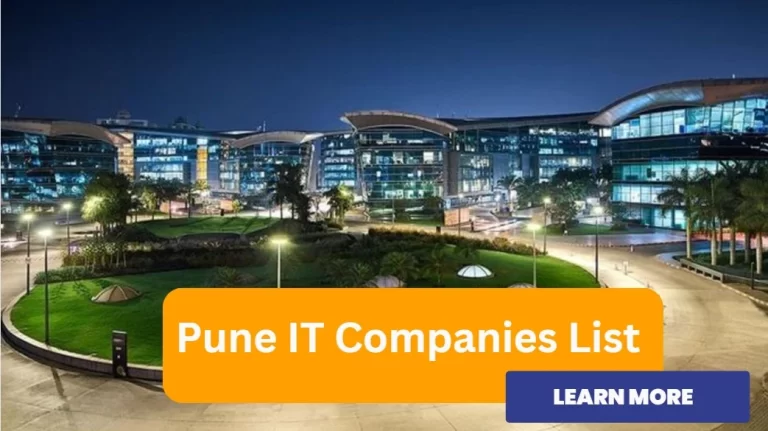Many people have a general query Which Business Comes Under MSME? So we have answered the question this blog post and explore the complete list of MSME Business in India.
Everyone aspires to be their own boss and pursue their own interests. You have already taken the first step toward entrepreneurship if you are not afraid of failure, as greats have been in the past. There are no restrictions on who can start a business based on their age or gender. Since you have the freedom and opportunity to make your business what you want, it’s crucial if you’re an entrepreneur that you adore it. It can be challenging to understand why you should invest in your brand and image if you are a fresh start-up or small firm. The quick method that people think of you is through your brand. Every entrepreneur forges their own path.
Take your own advice to heart. Whatever the motivation behind your desire to launch your own company, doing so may be both personally and financially gratifying if you have the appropriate business idea. Launching a start-up is similar to starting anything else. Not trying hard enough is the biggest error you can make. If there is a secret to success, it is not to be ignorant of it.
The term “Micro, Small and Medium Enterprises,” or MSME, refers to businesses whose annual turnover is less than Rs. 250 crores and whose investment in machinery and plant does not exceed Rs. 50 crores. The Ministry of Micro, Small, and Medium Enterprises is a department of the Indian government. The Ministry is committed to overseeing the laws, rules, and regulations pertaining to such MSMEs.
The investment cap and annual revenue for Micro, Small, and Medium Enterprises are summarised in the table below.
| Type of Enterprise | Upper Limit in the Investment in Plant and Equipment/Machinery | Upper Limit in the Annual Turnover |
| Micro | Rs.1 crore | Rs.5 crore |
| Small | Rs.10 crore | Rs.50 crore |
| Medium | Rs.50 crore | Rs.250 crore |
Micro, Small, and Medium-Sized Enterprises are essential to an economy’s ability to sustain a noticeable growth rate and create job opportunities. In many industrialized and emerging nations, this sector has been viewed as the driving force behind both social and economic development. MSMEs have made a great contribution to the Indian economy in terms of creating jobs, reducing regional inequalities, promoting equitable economic growth, and increasing the nation’s export potential.
Organizational Types for MSME
MSME is divided into two groups, namely:
Manufacturing Enterprise: These are the businesses engaged in the manufacture of goods. They are further divided into groups based on the annual turnover and the investment made in equipment and plant.
Services Enterprise: These companies offer services and are further categorized according to the amount of money they spend on equipment and their yearly revenue.
This sector has shown extraordinary success in terms of growth in number, amount of investment, size of output, and total contribution to national GDP despite significant infrastructural shortcomings and obstacles such flow of institutional credit and inadequate market links.
MSME Business List
No matter the size or type of the firm, we think it’s crucial to create a business plan. Here are a MSME business list for business planning to help:
| NIC CODE | INDIAN INDUSTRIES |
| A | AGRICULTURE, FORESTRY AND FISHING |
| B | MINING AND QUARRYING |
| C | MANUFACTURING |
| D | ELECTRICITY, GAS, STEAM AND AIR CONDITION SUPPLY |
| E | WATER SUPPLY; SEWERAGE, WASTE MANAGEMENT and |
| F | CONSTRUCTION |
| G | WHOLESALE AND RETAIL TRADE; REPAIR OF MOTOR VEHICLES AND MOTORCYCLES |
| H | TRANSPORT AND STORAGE |
| I | ACCOMODATION AND FOOD SERVICE ACTIVITIES |
| J | INFORMATION AND COMMUNICATION |
| K | FINANCIAL AND INSURANCE ACTIVITIES |
| L | REAL ESTATE ACTIVITIES |
| M | PROFESSIONAL, SCIENTIFIC AND TECHNICAL ACTIVITIES |
| N | ADMINISTRATIVE AND SUPPORT SERVICE ACTIVITIES |
| O | PUBLIC ADMINISTRATION AND DEFENCE; COMPULSORY SOCIAL SECURITY |
| P | EDUCATION |
| Q | Human health and social work activities |
| R | Arts, entertainment and recreation |
| S | OTHER SERVICE ACTIVITIES |
| T | ACTIVITIES OF HOUSEHOLDS AS EMPLOYERS; UNDIFFERENTIATED GOODS AND SERVICES-PRODUCING ACTIVITIES OF HOUSEHOLDS FOR OWN USE |
| U | ACTIVITIES OF EXTRATERRITORIAL ORGANIZATIONS AND BODIES |
Check the detailed NIC code list here.
SECTION A – AGRICULTURE, FORESTRY AND FISHING
01 – Crop and animal production, hunting and related service activities
02 – Forestry and logging
03 – Fishing and aquaculture
SECTION B – MINING AND QUARRYING
05 – Mining of coal and lignite
06 – Extraction of crude petroleum and natural gas
07 – Mining of metal ores
08 – Other Mining and quarrying
09 – Mining support service activities
SECTION C – MANUFACTURING
10 – Manufacture of food products
11 – Manufacture of beverages
12 – Manufacture of tobacco products
13 – Manufacture of textiles
14 – Manufacture of wearing apparel
15 – Manufacture of leather and related products
16 – Manufacture of woodland products of wood and cork, except furniture; manufacture of articles of straw and plaiting materials
17 – Manufacture of paper and paper products
18 – Printing and reproduction of recorded media (This division excludes publishing activities, see section J for publishing activities
19 – Manufacture of coke and refined petroleum products
20 – Manufacture of chemicals and chemical products
21 – Manufacture of pharmaceuticals, medicinal chemical and botanical products
22 – Manufacture of rubber and plastics products
23 – Manufacture of other non-metallic mineral products
24 – Manufacture of Basic Metals
25 – Manufacture of fabricated metal
26 – Manufacture of computer, electronic and optical products.
27 – Manufacture of electrical equipment
28 – Manufacture of machinery and equipment n.e.c.
29 – Manufacture of motor vehicles, trailers and semi-trailers
30 – Manufacture of other transport equipment
31 – Manufacture of furniture
32 – Other manufacturing
33 – Repair and installation of machinery and equipment
SECTION D – ELECTRICITY, GAS, STEAM AND AIR CONDITION SUPPLY
Division 35 – Electricity, Gas, Steam and Air Condition Supply
SECTION E – WATER SUPPLY; SEWERAGE, WASTE MANAGEMENT AND SUPPLY
36 – Water collection , treatment and supply
37 – Sewerage
38 – Waste collection, treatment and disposal activities materials recovery
39 – Remediation activities and other waste management services
SECTION F – CONSTRUCTION
Division 41 – Construction of buildings
Division 42 – Civil engineering
Division 43 – Specialized construction activities
SECTION I – ACCOMODATION AND FOOD SERVICE ACTIVITIES
Division 55 – Accommodation
Division 56 – Food and beverage service activities
SECTION J – INFORMATION AND COMMUNICATION
Division 58 – Publishing activities
Division 59 – Motion picture, video and television programme production, sound recording and music publishing activities.
Division 60 – Programming and broadcasting activities
Division 61 – Telecommunications
Division 62 – Computer programming, consultancy and related activities
Division 63 – Information service activities
SECTION K – FINANCIAL AND INSURANCE ACTIVITIES
Division 64 – Financial service activities, except insurance and Pension funding
Division 65 – Insurance, reinsurance and pension funding, except compulsory social security
Division 66 – Other financial activities
SECTION L – REAL ESTATE ACTIVITIES
Division 68 – Real estate activities
SECTION M – PROFESSIONAL, SCIENTIFIC AND TECHNICAL ACTIVITIES
Division 69 – Legal and accounting activities
Division 70 – Activities of head offices; management consultancy activities
Division 71 – Architecture and engineering activities; technical testing and analysis
Division 72 – Scientific research and development
Division 73 – Advertising and market research
Division 74 – Other professional, scientific and technical activities
Division 75 – Veterinary activities
SECTION N – ADMINISTRATIVE AND SUPPORT SERVICE ACTIVITIES
Division 77 – Rental and leasing activities
Division 78 – Employment activities
Division 79 – Travel agency, tour operator and other reservation service activities
Division 80 – Security and investigation activities
Division 81 – Services to buildings and landscape activities
Division 82 – Office administrative, office support and other business support activities
SECTION O – PUBLIC ADMINISTRATION AND DEFENCE; COMPULSORY SOCIAL SECURITY
Division 84 – Public administration and defence; compulsory social security
SECTION P – EDUCATION
Division 85 – Education
SECTION Q – HUMAN HEALTH AND SOCIAL WORK ACTIVITIES
Division 86 – Human health activities
Division 87 – Residential care activities
Division 88 – Social work activities without accommodation
SECTION R – ARTS, ENTERTAINMENT AND RECREATION
Division 90 – Creative, arts and entertainment activities
Division 91 – Libraries, archives, museums and other cultural activities
Division 92 – Gambling and betting activities
Division 93 – Sports activities and amusement and recreation activities
SECTION S – OTHER SERVICE ACTIVITIES
Division 94 – Activities of membership organizations
Division 95 – Repair of computers and personal and household goods
Division 96 – Other personal service activities
SECTION T – ACTIVITIES OF HOUSEHOLDS AS EMPLOYERS; UNDIFFERENTIATED GOODS AND SERVICES-PRODUCING ACTIVITIES OF HOUSEHOLDS FOR OWN USE
Division 97 – Activities of households as employers of domestic personnel
Division 98 – Undifferentiated goods- and services-producing activities of private households for own use
SECTION U – ACTIVITIES OF EXTRATERRITORIAL ORGANIZATIONS AND BODIES
Division 99 – Activities of extraterritorial organizations and bodies
What benefits come with registering and starting an MSME business?
The advantages of establishing a Micro, Small, and Medium Enterprise are as follows:
- The ability to obtain a loan without collateral is one of the main advantages of establishing an MSME. Numerous NBFCs and fin-tech companies provide loans to MSMEs and other small- and medium-sized businesses.
- MSMEs are eligible for significantly cheaper electrical bills.
- MSMEs also receive subsidies for patent registration, which encourages them to consistently work on innovative initiatives and develop.
What is the MSME NIC Code?
Udyog Aadhar or Udyam Registration are both registered using the National Industrial Classification (NIC) number. While registering for an MSME under the Udhyog/ Udyam, a mandatory code is needed.
Therefore, it would be more beneficial to your business, if you planned to launch a start-up or small firm that falls inside the specified categories.
Choose the best business startup idea from the MSME List of Business, and make your dream come true. As the Indian government is supporting the local small scale industry by providing training, financial helps and many more.
MSMEs registered businesses can obtain loans from non-banking finance companies as well as through specific government schemes & programmes. Before getting an MSME loan do register your business under the new msme portal called udyam registration portal. Therefore, get started on your entrepreneurial path.




